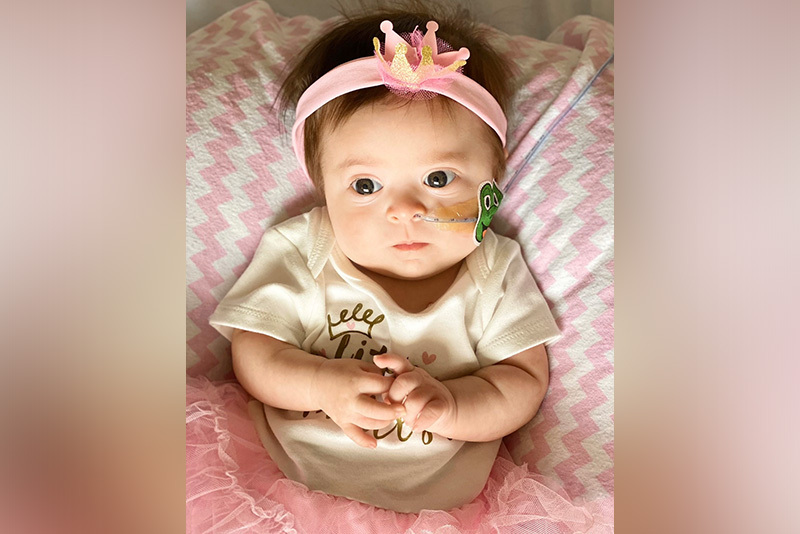Devina’s story: Minimally invasive Foker process repairs esophageal atresia

Selina De Leon doesn’t have a background in medicine — but she does have experience being a mom. When the mother of four learned that her youngest child, Devina, had a rare birth defect, “I said, ‘esophageal what?’” she remembers.
The condition, called esophageal atresia (EA), occurs when a baby’s esophagus develops in two separate segments that don’t connect. So much of Devina’s esophagus was missing that the ends couldn’t be easily connected with surgery, a problem known as long-gap EA. Babies born with EA have difficulty breathing, drinking, and eating on their own. Selina was determined to learn as much as she could about the condition.
Learning about the Foker process
Like many parents, Selina hit the Internet, where she learned about the Foker process. In this innovative procedure, a surgeon makes a small incision in the child’s back and then places four or five sutures on the upper and lower ends of their esophagus. These tiny stitches connect the ends to a traction system on the outside of the child’s body.
Because excessive motion might break or pull out the sutures, babies undergoing the Foker process must stay in intensive care unit (ICU) on a ventilator, or breathing machine, and receive medication to help them stay still. Over the next few weeks, clinicians gradually increase the tension on the sutures, which causes each end of the esophagus to grow until the surgeon can attach the two ends.
A minimally invasive option
Other parents that Selina met online urged her to bring Devina to the Esophageal and Airway Treatment Center at Boston Children’s Hospital, which has the most experience in the world performing the Foker process. There, they met the center’s surgeons, including Dr. Benjamin Zendejas-Mummert. He told them about a new minimally invasive approach of the Foker process.
As its name implies, the minimally invasive Foker process involves very small incisions on a child’s back and uses minimally invasive instruments and a camera. The surgeon places traction sutures on each end of the esophagus but creates the traction system inside the child’s body by securing the sutures around one of their ribs. Surgeons tighten these sutures every week until the two ends of the esophagus are close enough to attach to each other.
Because the risk of tearing or breaking the traction system is reduced, the child won’t need to be kept asleep and still. Preliminary results show that the minimally invasive approach is as safe and effective as the traditional Foker process, but requires less time spent in the ICU and fewer pain medications and sedatives. “I’d never heard of this approach and it sounded incredible,” says Selina. “I knew we were where we needed to be.”
A light at the end of the tunnel
Dr. Zendejas-Mummert determined that Devina was a candidate for the minimally invasive approach. The procedure was a success, and after spending about six weeks in the hospital, she was ready to travel home to Illinois. Today, she’s a happy 8-month-old who’s eating, rolling over, and meeting other milestones.
And Selina is eager to share her experience. “Every baby is different and their care may be different, but I want to help other families any way I can,” she says. “I was in their shoes, but I want everyone to know that there’s a light at the end of the tunnel — there’s hope.”
Learn more about the Esophageal and Airway Treatment Center.
Related Posts :
-

Making up for lost time: Living with esophageal atresia
Whether he’s riding his dirt bike, learning how to swim, playing with his dogs and cats, or herding the ...
-

What’s it like to have an endoscopy?
If your child has symptoms of gastroesophageal reflux or celiac disease, has been diagnosed with esophageal atresia, or has another ...
-

After surgeries to treat HLHS, Carter is healthy and happy at home in Florida
Carter Miller loves action. The 4-year-old Florida resident enjoys riding on golf carts and flying high on swing sets. ...
-

Understanding and treating Mason’s congenital nevus
Kim and Ryan noticed their son’s birthmark almost immediately after he was born. They knew birthmarks were common, but ...





